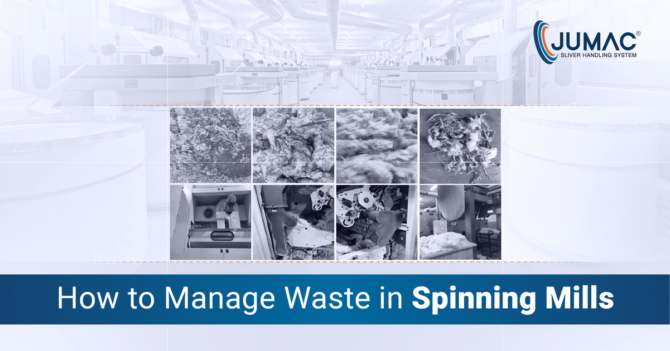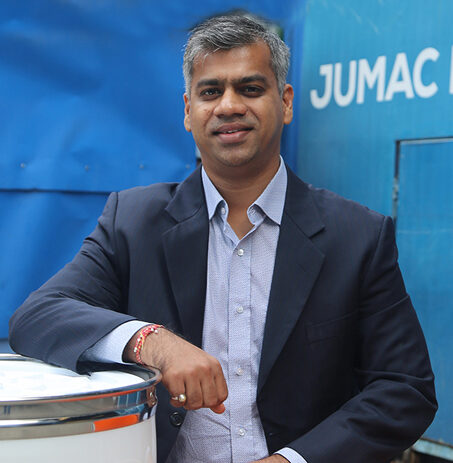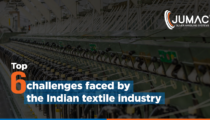With nearly 5% share in the worldwide textile & apparel…

How to Manage Waste in Spinning Mills?
With growing concerns over pollution and environmental integrity, the material wastes generated in textile and apparel sectors have come sharply into focus. Annually, 0.5 million tonnes of microfibres are dumped into water bodies, contributing a significant chunk of the total microplastics-related water pollution. Nearly 10% of the total emission of greenhouse gases are also released by the textile & footwear industry. In such a scenario, owners of spinning mills as well as OEM manufacturers, suppliers of spinning cans and other stakeholders need to take up the responsibility of efficiently managing the waste levels, so that the ecosystem is not harmed in any way – and no reusable resource is lost. Here’s a lowdown on how mill wastes can be managed optimally:
Understanding The Different Types Of Wastes In Spinning Mills
The waste material generated as by-products of the day-to-day activities at mills can broadly be classified as ‘useful’ and ‘non-useful’. The ‘useful’ wastes can be applied in open-end spinning processes, count yarn coursers, and related operations. The ‘non-useful’ wastes cannot be reused – but there is the possibility of using them as fertilisers.
For efficient waste management, it is also important to distinguish between ‘hard waste’ (generated in the ring frame and winders; generally not reusable) and ‘soft waste’ (generated in speed frames, carding processes in fibre form; generally usable). Once the different types of wastes are identified, managing them optimally becomes a lot more simple.
Good Fibre Ratio In Clean Waste And Dirty Waste
Strippings, broken sliver, webs and lap ends are obtained as waste products during different stages of spinning – right from rotor spinning and draw frames, to ring spinning, roving and others. These are known as the ‘clean waste material’ and typically have >95% of ‘good fibre ratio’ (roving wastes often have ~97% good fibre ratio). On the other hand, the good fibre ratio of the waste material generated during carding and blowroom processes is significantly lower – ranging from a minimum of 35% to a maximum of 55%. Filter strippings can have good fibre content of upto 80%.
In order to effectively manage the different types of wastes, mills have to adopt a customised set of procedures. The material that has relatively high waste fibre should ideally be used in coarse/medium coarse rotor yarns. On the other hand, wastes with ~5% waste-fibre ratio can easily be used in ring spinning and related yarn manufacturing. In addition, wastes generated from inefficient usage of sliver cans also have to be used according to their quality & composition.
Maintaining Steady Yarn Retention Levels
For waste control and reuse in mills, the importance of establishing a steady yarn realisation percentage (YR%) cannot be overemphasised. Three key factors – the expected quality of yarn, cotton & cotton trash levels, and the machinery used – determine this YR% figure. The YR% is different for combed counts and carded counts. Comber noil, usable waste, card waste, yarn waste and mixing trash are some of the parameters that are used to calculate the YR%. It also has to be kept under consideration that the YR% calculation has to be done separately for mills that reuse waste material in the mixing, and for those that do not.
Waste Management In The Blowroom
Around 3% of the total volume of waste material in spinning mills come from the blowroom. Leading mill owners as well as top manufacturers of spinning cans outline several processes that can minimise these wastes and bolster cleaning efficiency levels. These include modifying beater speeds (680-700 rpm), fan speeds, changing the gap between grid angles/inclinations and grid bars, and managing the beater – feed roller-grid bar distance. If there are any mechanical glitches detected, the same should be repaired/replaced on priority.
Note: Spinning mills should start shifting their focus from ‘waste control’ (which takes into account the generation and reduction of waste) to ‘waste management’ (which gives greater weightage to waste utilisation).
The Need For Waste Processing Machinery
Irrespective of whether spinning wastes are reused or have to be sold/disposed of, they have to be systematically pre-processed. This is where the need for waste processing machinery comes into the picture. Premier machines, willow machines, thread extractors and pickering waste openers (also known as roving openers) are some commonly used machine tools used for soft waste processing. Hard waste processors work differently, by converting the waste material into a fibrous and loose matter. Hard waste beaters and rag pulling machinery are generally used. Over the last half a decade or so, the trend of installing advanced waste spinning units at mills has become more & more prominent.
Waste Management At The Carding Stage
Various types of wastes are generated during the carding phase in spinning mills, like sliver cut/breaks, flat strips, droppings, filter waste material and others. ‘Tandem carding’ (with a couple of high-production cards) is a technique that can be adopted to increase cleaning efficiency levels by upto 7%. In addition, mill workers can also make use of perforated undercasings – as well as increase the licker-in speed – to minimise wastes and optimise waste management processes. For reducing neps and eliminating seed coats, maintaining high cylinder speeds (with high flats) is also effective. Generally though, focusing on the licker-in area is imperative for card cleaning.
Waste Recording and Controlling Hard Waste
Accurate calculation of waste stock is extremely important to minimise ‘invisible losses’ and inefficient waste handling. The waste percentage has to be calculated by considering all the shifts and the machine production volumes (as a point of reference). Regular waste tracking would ensure that there are no end breakages, the mixing process is not affected in any way, and all spinning machinery and sliver cans are being used efficiently.
Dedicated waste investigation lies at the heart of the waste management strategies devised by any spinning mill. Given the fact that excess hard waste affects overall mill productivity levels, controlling it becomes an extremely vital consideration. Apart from bringing down the cop rejection figures and ensuring smooth material handling, adoption of systematic winding and ring frame practices are also proven methods of hard waste control in mills.
Waste Management At The Combing Stage
With comber wastes contributing more than 15% of the total cotton waste material in mills, proper waste-management is hugely important at this stage. Between the comber and the cards, the number of reversals should be fixed at an even number – while the amount of pre-combing draft can also be increased, in order to bring about a significant reduction in wastes. Due care, however, has to be taken to ensure that the quality of the final yarn is not adversely affected.
Note: Mechanical problems and/or process-related problems also lead to too much waste generation during ring spinning. Weighing this waste according to respective shifts and sections is key for controlling it optimally.
From sub-optimal working procedures and inefficient material handling, to high lapping/sliver breakage, transportation glitches on the mill floors, and using outdated spinning machinery & sliver cans – the reasons for excess waste generation in spinning mills can be diverse. The onus lies on mill workers and management to identify the different types of material wastes (‘clean waste’, ‘dirty waste’, etc.). Broadly speaking, the blow room contributes the highest percentage of wastes, while the draw frame generates the least volume of waste. There is no room to degrade our environment any further, and waste management optimisation in spinning mills will definitely be a step in the right direction.

Passionate about transforming the industrial sector of textile and spinning industry with innovative solutions. Director at Jumac Manufacturing, leading spinning cans and accessories manufacturer and exporter from Kolkata, India.









